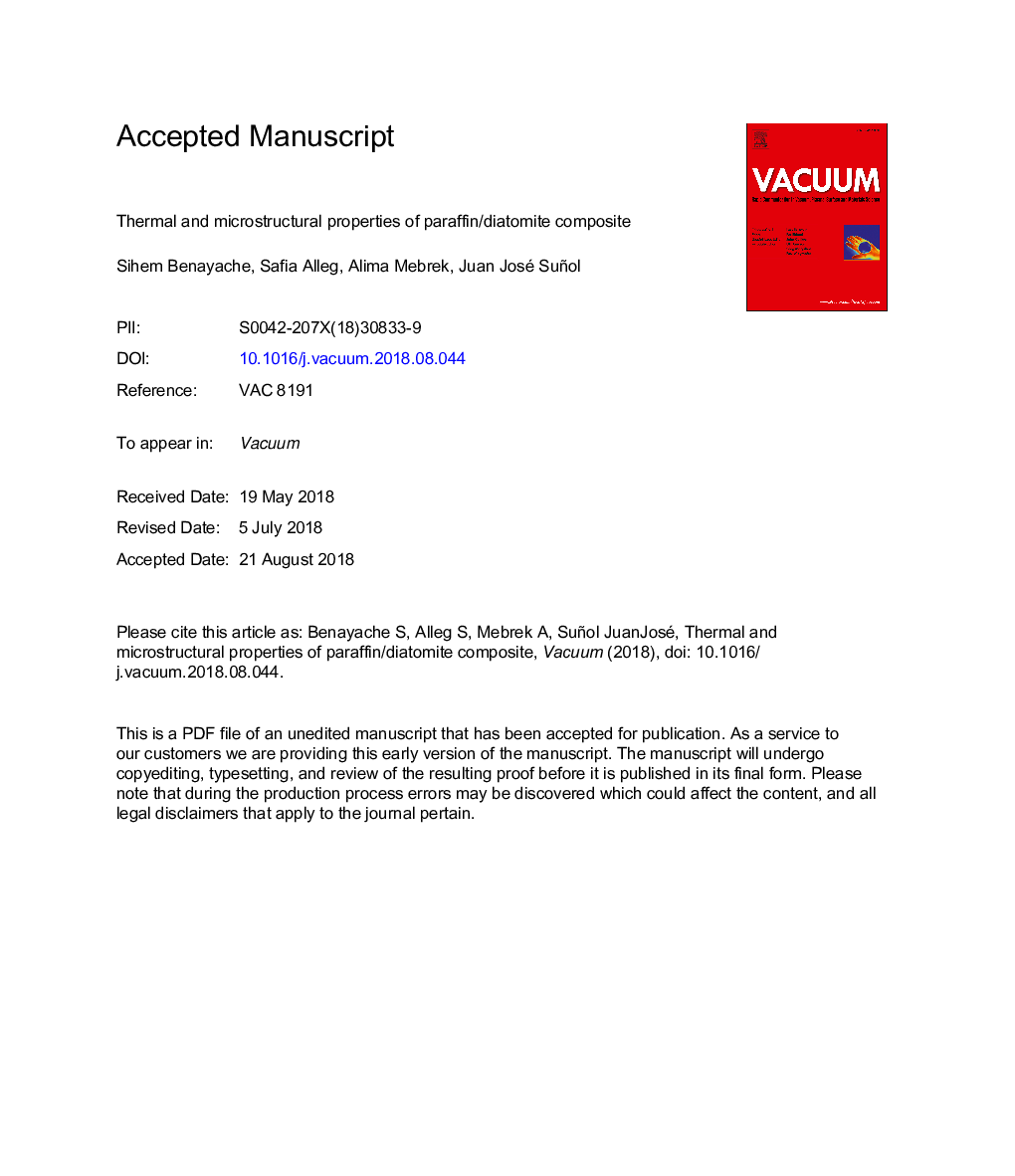| Article ID | Journal | Published Year | Pages | File Type |
|---|---|---|---|---|
| 10128787 | Vacuum | 2018 | 30 Pages |
Abstract
The present work is devoted to the study of the impregnation of both the raw and calcined Algerian diatomite with a mixture of paraffin wax (PW) and liquid paraffin (LP) in order to obtain composite PCMs with a melting temperature below 30â¯Â°C and an appropriate latent heat. Structural, microstructural and thermal properties were studied by X-ray diffraction (XRD), scanning electron microscopy (SEM), Fourier transform infrared spectroscopy (FTâIR), differential scanning calorimetry (DSC) and thermogravimetric analysis (TGA). The raw diatomite contains many phases such as quartz (hexagonal SiO2), tridimite (trigonal SiO2) corundum (α-Al2O3, trigonal), CaSO4 (orthorhombic) and calcite (CaCo3, trigonal). After calcination, the main phases are quartz, tridimite, calcite and CaSO4. The SEM micrographs show that the PCMs are well impregnated into the diatomite pores. The FTâIR results reveal the absence of chemical interaction between paraffin and diatomite. The paraffin/calcined diatomite composite PCMs exhibits a melting temperature of 28.44â¯Â°C and a latent heat of about 56.40â¯J/g. Due to their thermal reliability and thermal energy storage performance after thermal cycling, the prepared composites PCMs are good candidates for thermal energy storage in buildings.
Related Topics
Physical Sciences and Engineering
Materials Science
Surfaces, Coatings and Films
Authors
Sihem Benayache, Safia Alleg, Alima Mebrek, Juan José Suñol,
